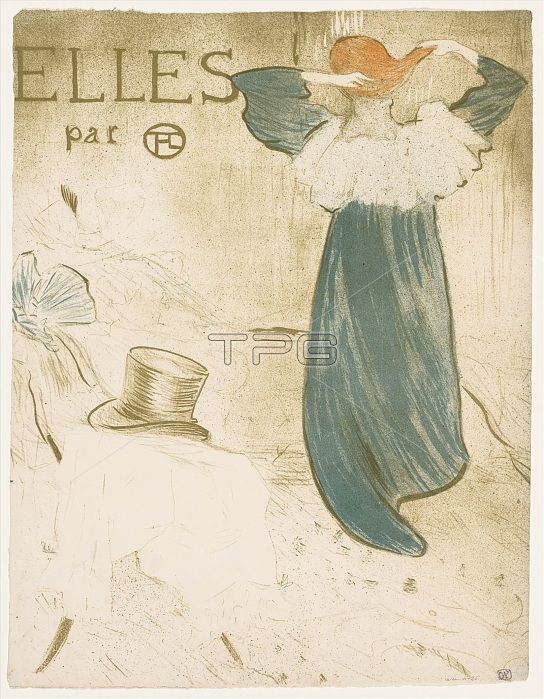
Elles, 1896. The French publisher Gustave Pellet, hoping to attract new customers, persuaded Lautrec to make a series of ten prints, plus frontispiece and cover, depicting brothels. Although it was not unusual to see prostitutes pictured in the popular press, Lautrec was the first well-known, successful artist to tackle this subject. The set was a commercial failure when it first appeared, perhaps because the scenes are not erotic. Lautrec had said that "they are women to my liking", and between 1892 and 1895 he often lived in various Parisian brothels for weeks at a time. This allowed him to witness the daily lives of the women, including the intimate acts of sleeping and bathing, and to sense their suffering. The result is that only two of the scenes show prostitutes as desirable temptresses. The remainder depict the mundane routine of the women's private world, their caring for each other, their boredom, and, living on the periphery of society, their sense of isolation. Lautrec did not take a direct moral stand. He portrayed the women sympathetically, restoring to them their humanity. One scene shows Juliette Baron, whose life of vice has led to premature aging, bringing her daughter Paulette breakfast. Other images depict the women at private moments, bathing or combing their hair in natural, relaxed poses, unaware of being observed. The beauty of the drawing and use of colour makes this set one of the masterpieces of late nineteenth-century French colour lithography.
| px | px | dpi | = | cm | x | cm | = | MB |
Details
Creative#:
TOP25282047
Source:
達志影像
Authorization Type:
RM
Release Information:
須由TPG 完整授權
Model Release:
No
Property Release:
No
Right to Privacy:
No
Same folder images:

 Loading
Loading